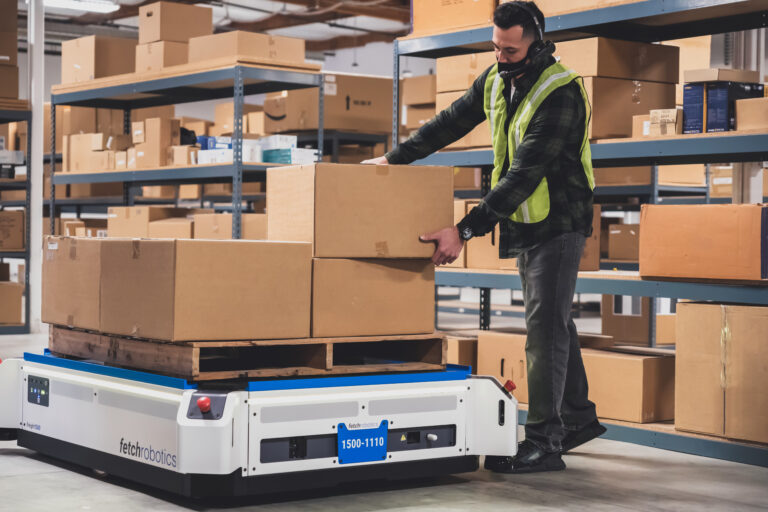Lucas Systems has announced a partnership with Silicon Valley-based Fetch Robotics to enable what it suggests will be the next generation of smart warehouses. Through the partnership, Lucas and Fetch will offer tailored solutions to orchestrate and optimise how warehouse workers interact in harmony with Fetch’s autonomous mobile robots (AMRs).
Fulfilment and distribution centres are under tremendous pressure due to growth in e-commerce combined with a shrinking labour market. Lucas executives state its clients need help increasing throughput and maintaining high worker productivity while meeting accuracy and more stringent customer delivery requirements. These market pressures have led to rethinking old models and focusing on new, innovative ways to improve DC performance.
“The future environment of warehouses and distribution centres will be a mix of people, robots, machines, and systems all working together,” said Ken Ramoutar, Chief Marketing Officer at Lucas Systems. “The precise orchestration of all the pieces will be key to achieving a competitive advantage in performance.”
“The combination of Lucas’s AI-based warehouse optimisation software and Fetch’s broad portfolio of AMRs enables optimised order, batch, case, and pallet picking in distribution centres and automates virtually any manual material movement in a facility,” added Stefan Nusser, Chief Product Officer at Fetch Robotics. “This enables our joint customers to increase picking efficiency, reduce cycle times, and reduce the impact of labour shortages.”
“That intersection of how people and robots work together is a hugely important and often overlooked part of the warehouse automation equation, but it’s where a lot of the unseen value exists,” noted Ramoutar.
The combined solutions from Fetch and Lucas will materially redistribute the division of labour in the warehouse. Robots will manage tasks best suited for machines, and this will free up warehouse workers to focus on higher-valued work. In an AMR-supported picking workflow orchestrated by Lucas, for example, a worker can avoid a lot of unnecessary walking by picking items to a tote on a Fetch AMR, directing the AMR to a conveyor system to unload, and then triggering another robot to move into place for the worker to continue picking.







